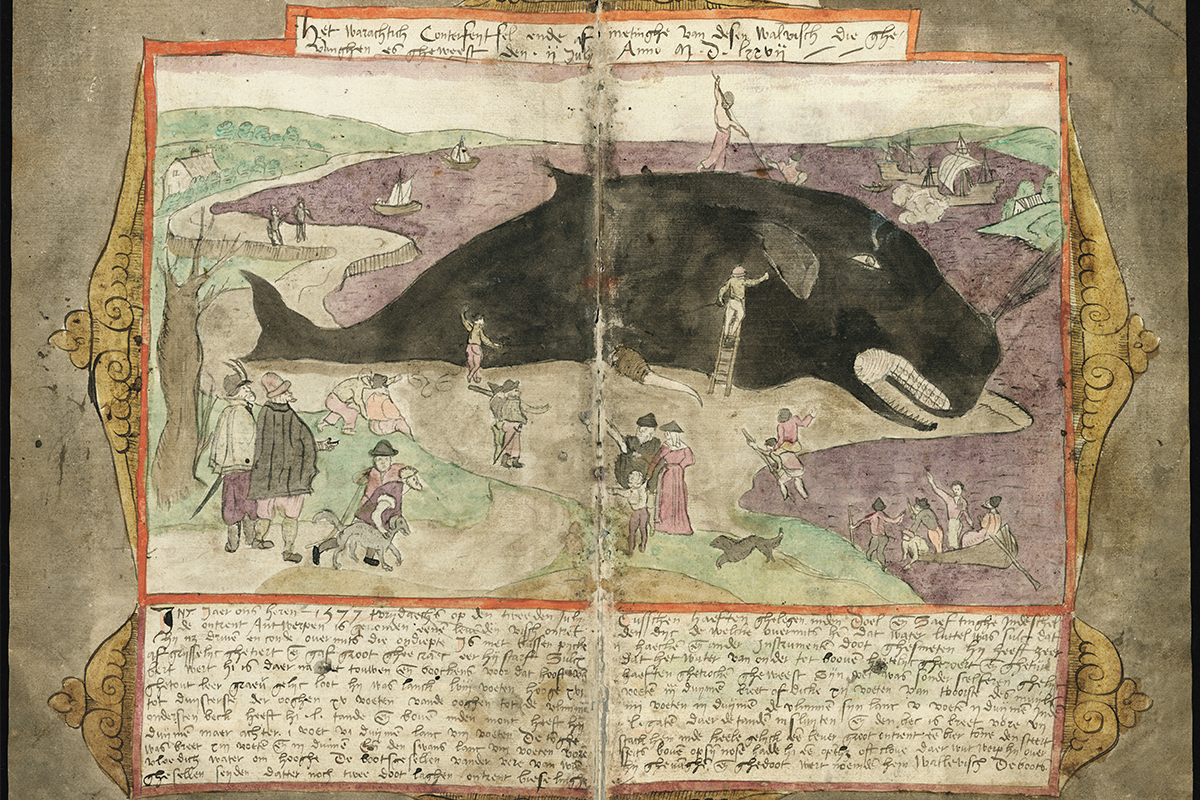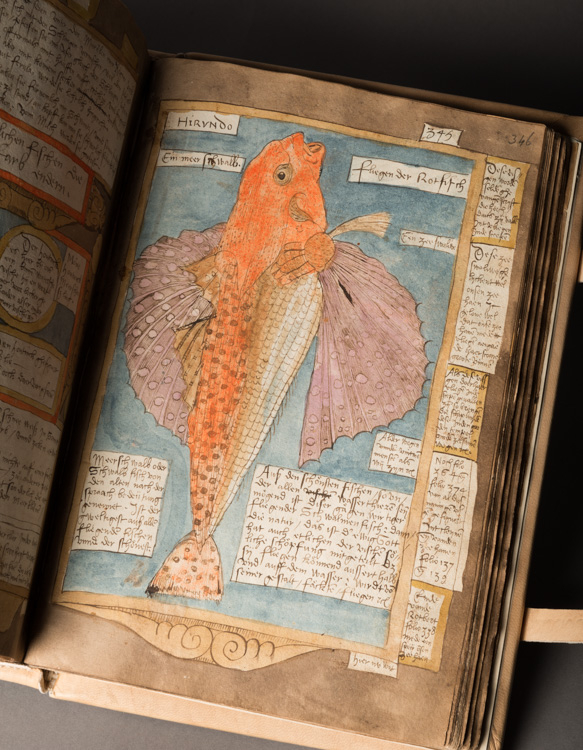Adriaen Coenen, unschooled expert on marine life
Driven by curiosity
Born and raised in the fishermen’s town of Scheveningen, Adriaen Coenensz van Schilperoort (1514 – 1587) was fascinated by marine life. During his work as a fisherman and merchant, he collected information on previously unknown species. Intrinsic curiosity drove him to accurately record all aspects of his daily life on the North Sea, in drawings and notes. Thus, he acted just like a trained marine scientist would today.

Visboeck
Coenen put down his knowledge in an album that can be seen as the first encyclopedia of the North Sea: the Visboeck (Fish book, 1577-1581). The 412 pages of the book are filled with true-to-life coloured illustrations, biological facts and behavioural descriptions by the hand of Coenen. Next to knowledge on North Sea fish, boats and fishery techniques, Coenen shared information on exotic species such as crocodile and hippo, and also on fantastic features like sea monsters and dragons. Coenen incorporated newly published information by the nature experts of his time in his manuscripts, and The Visboeck very much represents 16th century knowledge on the marine world. The Walvisboek (Whale book) and an unfinished manuscript, just like the Visboeck from Adriaen Coenen’s hand, have also been preserved.
First officially published in the 21st century
Nevertheless, Coenen’s work remained fairly unknown for almost four centuries. Between 2002 and 2004, the Visboeck was restored by the National Library of the Netherlands (Koninklijke Bibliotheek, KB) in the Hague, that digitised the work and made it freely accessible online for anyone to leaf through. Today, it is a top item in the collection of the KB.
Much consulted expert
In 2005, Dutch historical researcher Florike Egmond published the extensive study ‘The Visboeck – the world according to Adriaen Coenen’. Egmond sheds light on the role of Coenen’s work at the very starting point of Dutch marine science. In a time when formal science was still primarily accessible to the elite, Coenen, who had received only a basic education, had become a much consulted expert. He moved in the best circles of Dutch society that also included Prince William of Orange. Egmond: “I am intrigued by the fact that greasy fingerprints were found on the pages, indicating that Coenen showed his book to friends and admirers at dinner parties.”
Relevant to contemporary science
Adriaen Coenen’s ecological descriptions proved to be of importance even to marine science in our time. In 2014, Adriaan Rijnsdorp and Floris Bennema of Wageningen University & Research published a comparative study on aspects of North Sea fisheries, such as target species, fishing grounds and gear, at the end of the 16th century, in 1900 and the 1990s. Based on the data Coenen gave in his Visboeck, the authors were able to map the changes in species abundances during the past four centuries. “Adriaen Coenen’s Visboeck sketched an image of the ecology and exploitation of the North Sea at the end of the 16th century, but also of a writer’s fascination and urge to share it with others”, they comment. It certainly makes Adriaen Coenen a suitable name for a 21st century research vessel.
